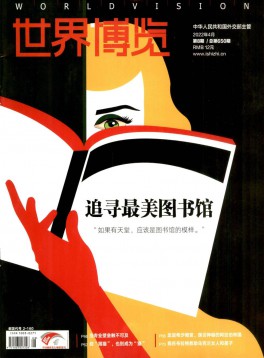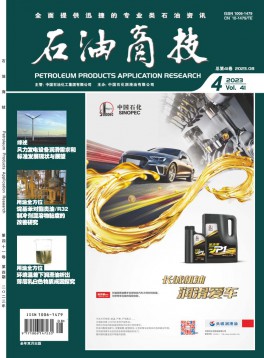现在的茶文化模板(10篇)
时间:2023-08-18 17:25:44
导言:作为写作爱好者,不可错过为您精心挑选的10篇现在的茶文化,它们将为您的写作提供全新的视角,我们衷心期待您的阅读,并希望这些内容能为您提供灵感和参考。
篇1
现代经济的快速发展,不仅推动了人们物质生活水平的迅速提升,而且促使消费者精神上的要求也开始偏向更高标准。古香古色的茶具在人们生活中不再是单一的饮品用具,反而成为消费者地位身份以及品位的象征,其作用举足若轻。越来越多的消费者对茶具选择上,在要求满足其使用功能的同时,更多关注其彰显的精神寓意。所以研究以传统吉祥文化元素为焦点的文化创意在现代茶具中的应用,对于茶具产品设计的发展具有一定的积极作用。
1 传统吉祥文化的内涵及表现形式
我国的传统吉祥文化最早产生于原始社会,进而随着人类生命的延续、社会的发展而变得越来越复杂。深深植根于中国劳动人民心中的图腾文化就是传统吉祥文化的一种,并延续至今。因为“吉祥”二字所具有的理想主义色彩,其体现的是对未来美好的憧憬和祝福。上至达官贵人,下至平民百姓,对吉祥文化都有自己的独特感受和情怀。类似于“年年有余”“五谷丰登”“龙凤呈祥”“百鸟朝凤”等吉祥文化不胜枚举。
我国的传统吉祥文化元素,种类繁多且内容丰富多样,各类动、植物都是传达吉祥如意的物质载体。诸如龙凤、龟鹤、鹿象,以及松竹、茱萸等都承载了先人们的美好精神寄托。表现形式多是以图案、几何形式出现的吉祥纹样,虽形式不一,但都体现了人们对未来追求的美好愿望。这些用来表达吉祥文化元素的图案,多采用谐音、寓意和符号等表现手法,摒弃了对其自然属性的真实摹写,突出强调理性观念的形体背后所具有得象征寓意。
2 传统吉祥文化元素在茶具设计中的表现
毋庸置疑,将具有吉祥文化内涵的元素,通过创造者的匠心融入茶具设计中,有利于提升我国茶艺文化的精神品位,让茶具散发出浓烈的文化底蕴并促进其交流与发展。在茶具设计中融入传统吉祥文化元素,需要以传统文化土壤为创作基础,通过形态、色彩、装饰、工艺等因素的浑然天成使其具备吉祥文化寓意的气质。
2.1 形态体现
所谓形态即产品形式美的直观体现,是产品物质本身的一种视觉外化。所有产品在遵循形式美法则的基础上通过造型形态的曲直变化、形体比例,以及尺度均衡而产生一种符合消费者审美法则的氛围。并且能够传达出产品所想要表达的信息,使消费者产生如轻松、愉悦、神秘、舒服等心理感受。所以传统吉祥文化元素在现代茶具设计中的应用,首先可以考虑茶具的造型形态。选择寓意喜庆祥和如“荷花”“鸳鸯”以及生肖等元素进行创作,采用仿生学的概念,通过直观的形似或者意向的引申,将所选元素融入茶具的设计之中重塑,使其兼备功能性与艺术性,符合消费者追求实用性和对精神文化的渴望于一身的心理需求。如工艺美术大师蒋新安老师创作的紫砂壶系列,以生肖为题材,进行创作。其中一件以生肖之猪为造型的紫砂壶,壶身腹部如猪肚一样微微鼓起,壶尾缱绻如同猪尾,整体气韵和谐自然,加上盖上的小猪作为壶钮,倍感憨厚可爱。
2.2 装饰体现
现代茶具设计在外观装饰上,不乏通过图案装饰来达到吸引消费者目的的设计。装饰图案的内容和表现手法多变,有运用吉祥元素的直接表达,也有运用其纹理效果的抽象表现。但其共同作用都在于通过装饰纹样展现出对象物体的形象美和内涵美。吉祥文化元素以图案形式融入茶具设计中,提升了装饰效果,并使其具备一定的美学基础,实现装饰功能和寓意功能的统一。此外一般吉祥文化元素应用于产品设计中都会具有很强的直观性,目的在于让消费者更加直接地感受产品所传达的用意。
2.3 色彩体现
色彩作为产品语意的形式语言之一,在设计领域所发挥的作用是深刻而不容小觑的。较之于产品的造型,产品色彩具有更深刻的视觉冲击力。同时,不同的色彩表情也会带给消费者的不一样的心理情感,比如紫色的神秘,高雅,蓝色的冷漠理智,或者是红色的热情奔放等等。善于掌握色彩情感的规律,精确把握色彩对消费者的心理暗示作用,并能选择具有启发性的色彩形象灵活运用到产品设计中,有利于消费者对产品所产生的浓厚兴趣和关注,产生主动的消费心理活动。不言而喻,色彩在现代茶具设计当中的同样具有不可替代的重要作用。例如,把象征着喜庆吉祥寓意的红色作为茶具设计主色调,与传统吉祥文化元素在现在茶具设计中的应用便不谋而合。红色,象征着喜庆和红火,符合中国人的传统心理和对美好理想的浓烈渴望,更有利于提升茶具作为礼品的商业价值。
3 现代茶具设计对传统吉祥文化的借鉴意义
传统吉祥文化元素作为我国传统民族文化中的一颗明珠,能够历经时间的考验而传承至今,已经深入人心。所以在信息物质文明飞速发展的当下,现代产品设计的发展应该更多的投入文化创意的概念,而传统文化就是最好的创意来源。在遵循产品设计规律的前提下,能够取其精华,把握时代的特征,在充分挖掘传统吉祥文化和对传统茶具研究的基础上融入现在的创新技术与设计理念,创造出符合现代人们消费观和审美情趣的茶具设计。
产品设计不是单一的针对某种物体的创造,其目的在于满足消费者的生活需求,提高生活质量,功能性是产品存在的前提。任何产品也不是单一的存在,它的使用场所和周围的环境具有密不可分的关系。所以,以传统吉祥文化元素作为切入点,如何在现代茶具设计中处理好物―人―环境三者之间的关系,值得我们深入思考。
首先,需要融合现代的科学技术。科学技术是第一生产力,更是现代茶具设计发展中不可或缺的动力。茶具的造型不同于一般艺术品,它的创作会受到现实条件的限制,比如材料、工艺等因素,都会影响到茶具由构思到具体实现的可行性。现代茶具的设计在强调产品造型美学的同时也必须强调要注意先进科技的融入,注意机械设计与手工技艺融合,实现工艺美与技术美的结合。
其次,适应现代的生活方式,即适应现在快节奏化生活方式。茶具作为人们日常生活用具,与人的联系密切。其造型,工艺,功能对人们的生活标准和品质都有一定的影响。在生活方式快节奏,信息化越来越普及的社会背景下,人们自然对产品的设计也会有新的很高要求,首先最主要的是对所使用的产品能简洁、有效、直接地达到自己的目的,其次,是产品在人们的使用过程中与人产生交互娱乐的作用。茶具设计要做的就是,它本身不仅仅只是茶具,更是人们生活中以茶会友的纽带,其舒适性和娱乐性十分重要。
茶具设计在交互设计上的表现,主要在于满足用户的情感化需求。要求茶具在满足其基本功能的前提下,符合人机适应性。所以在表现茶具的个性时,要更注意其最基本的使用功能,如考虑茶壶在使用过程中的方便性,把手端拿的舒适性,是否能够稳拿稳放,壶把手能否利于倒茶,壶盖在使用过程中不易滑落,茶具的容量要适中,壶的耐热与耐寒性要好,以防止因为冷热不均造成的破坏等等。在茶具的整体设计上还要根据人体的生理、心理特征以及人们日常的生活习惯充分考虑使用过程中“握”“端”“提”“拿”等手部特征以及“喝”的嘴部习惯。能够在注重整体的同时,考虑细(下转第页)(上接第页)节部分的设计,如把手的弧度、壶身的倾斜度以及不同的地域环境对茶具的特殊要求等,使其兼具细节之美。
最后,要实现节约、可持续化发展的大趋势,现代茶具设计要体现绿色、环保。中国传统吉祥文化反映的是一种对美好生活的向往和对天人合一的敬畏,这与绿色设计提倡的环境保护、可持续化发展具有很好的契合。所以茶具设计要考虑资源合理与优化配置,提高利用效率使用绿色材料,做到加工工艺的环保。
4 结语
在工业化大发展的今天,适应工业化进程的批量化生产已经开始受到部分消费者的摒弃,而以个性化和小众为趋势的设计则开始异军突起,并深得追求精神领域自由的消费者喜爱。所以如何在现代与传统文化之间取舍,在平民大众和曲高和寡之间进行探索,从而创造出形神兼备是茶具设计值得人们深入思考。
现代茶具设计讲究功能性与艺术审美趣味的统一。符合人性化设计的茶具不仅使消费者在使用过程中得心应手,更能使消费者的心理情感在品茶的过程中得以满足,传达出茶文化高山流水般的气韵神味。所以,把传统的吉祥文化作为设计师匠心独运的灵感来源,选择合适的文化元素应用到现代茶具的设计之中,对于创造极具人性化的茶具,推动茶文化的持续向前发展,必然具有推波助澜的积极作用。
参考文献:
[1] 祁小雨.中国传统吉祥文化在陶瓷茶具设计中的应用研究[J].
[2] 饶恒.基于系统设计理论的现代茶具系统设计研究[J].
[3] 李砚祖.造物之美――产品设计的艺术与文化[M].北京:中国人民大学出版社,2000.
[4] 王受之.世界现代设计史[M].广州:新世纪出版社,1995.
[5] 王玲.中国茶文化[M].北京:九州出版社,2009.
篇2
茶在中国有着极为悠久的历史,早已经成了人们日常生活中必不可少之物,正所谓“盖人家每日不可阙者,柴米油盐酱醋茶”。然而,相对于俗谚里排名其前的“柴、米、油、盐、酱、醋”,“茶”在与人们的生活紧密联系的同时,已经生发出了其他深层次的意义与内涵,不再仅仅是单纯的日常用品之一了。下面我们就从《红楼梦》这部文学名著所提及的相关茶事入手,具体来看一下“茶”在中国传统文化的“礼”与“俗”两个方面所扮演的角色。
一、茶之为礼
首先,我们先来看一下“茶”对于“礼”的表达。“茶”在礼的方面的表现主要有两点,即表示“敬”与用以“赠”。
(一)有关于敬
既然茶最广为人知也最为普遍的作用是作为人类生活的必需品,在日常生活中必不可少,那么,就如同中国人见面往往相互问候一句“吃了吗?”一样,有客登门,主人往往首先是“奉茶”——在这里客人渴或不渴已经不重要,关键在于“奉茶”本身已经表明了主人对来客的招待,表明了主人的礼数。而与客人的会面又往往是以“端茶”的形式结束,因此我们可以这么说,茶在这里已经成了代表“礼”的文化符号,而“奉茶迎客”与“端茶送客”则体现了茶的实用价值与礼俗象征形式的完美统一。
《红楼梦》中可以表现奉茶作为待客之礼的例子是很多的。如第一回《甄士隐梦幻识通灵 贾雨村风尘怀闺秀》中有这样一段描写:
……士隐笑道:“今夜中秋,俗谓‘团圆之节’,想尊兄旅寄僧房,不无寂寥之感,故特具小酌,邀兄到敝斋一饮,不知可纳芹意否?”雨村听了,并不推辞,便笑道:“既蒙谬爱,何敢拂此盛情。”说着,便同士隐复过这边书院中来。
须臾茶毕,早已设下杯盘,那美酒佳肴自不必说。
从这里我们看到,甄士隐在中秋佳节邀请贾雨村,是以饮酒赏月之风流雅事为目的的。但二人至甄家并没有直接入席,而是先“茶”,等“毕”方入席,“茶”之作为待客之礼,由此可见一斑。
《红楼梦》第十七回至十八回《大观园试才题对额 荣国府归省庆元宵》中,元春归省的有关描写是“茶已三献,贾妃降座,乐止。”为什么要这样做呢?元春虽然是贾家的女儿,但她“才选凤藻宫”、“被加封为贤德妃”之后,在等级制度极度森严的封建社会,她的社会身份就大大提高了,已经涂上了皇家的色彩,在这里,贾家并不是在迎接一个出嫁了的女儿,而是在欢迎一位皇室人员的“大驾光临”。由此我们可以看到,“茶”之作为表示敬意的一种方式,甚至可以进入神圣的庙堂之中,表示对皇室的虔诚与敬意。
的确,“茶”还可以作为臣僚进贡于君王的贡品,因此,有“贡五侯宅,奉帝王家”之说。关于进贡,据现有资料来看,茶叶作为贡品起源于周代,“周武王伐纣,实得巴蜀之师,……既克殷,以其宗姬封于巴……”“其地土植五谷,牲具六畜,桑、蚕、麻、纻、鱼、盐、铜、铁、丹、漆、茶、蜜……皆纳贡之。”由此可见茶之作为贡品的悠久历史。
(二)有关于赠
将茶叶作为礼品送给亲朋好友,在中国古代也是极为平常之事。如清代阮葵生在《茶余客话》中就记载曰:“珍币之下,必衬以茶。更以瓶茶分赠亲人。”白居易在其诗《萧员外寄蜀新茶》中即有“蜀茶寄到但惊新,渭水煎来始觉珍”的句子,这些都表明了茶可以作为礼物送人。
《红楼梦》中也有不少关于这个方面的描述:
香菱嘻嘻的笑道:“我来寻我们的姑娘的,找她总找不着。你们紫鹃也找你呢,说琏二奶奶送了什么茶叶来给你的。走罢,回家去坐着。”一边说着,一边拉着黛玉的手回潇湘馆来了。果然凤姐儿送了两小瓶上用的新茶来。
二、茶之为俗
茶与百姓生活息息相关,不仅仅在“礼”上,还表现在“俗”上。下面我们就从“婚”与“祭”两个方面来看一下“茶”与“俗”的联系。
(一)有关于婚
《红楼梦》中的一个情节是凤姐送茶、黛玉道谢,之后紧接着写到宝玉说自己尝了所送之茶后认为不好,黛玉说吃着却好。
宝玉道:“你果然爱吃,把我这个也拿了去吃罢。”凤姐笑道:“你要爱吃,我那里还有呢。”林黛玉道:“果真的,我就打发丫头取去了。”凤姐道:“不用取去,我打发人送来就是了。我明儿还有一件事求你,一同打发人送来。”
林黛玉听了笑道:“你们听听,这是吃了他们家一点子茶叶,就来使唤人了。”凤姐笑道:“倒求你,你倒说这些闲话,吃茶吃水的。你既吃了我们家的茶,怎么还不给我们家作媳妇?”众人听了一齐都笑起来。林黛玉红了脸,一声儿不言语,便回过头去了。
是什么让一向伶牙俐齿、有着一张“叫人恨又不是,喜欢又不是”的巧嘴、“说出一句话来,比刀子还尖”的林黛玉哑口无言了呢?在这里就涉及到了“茶之为俗”的一方面,即自宋以来,即有用茶作定婚礼的风俗,那么,为什么要将“茶”与“婚”联系在一起呢?这是因为,“茶不移本,植必生子。古人结婚,必以茶为礼,取其不移植子之意也。今人犹名其礼为下茶。”故男女双方约为婚姻时,“既已插钗,则伐柯人通好,议定礼,往嫁报定。若丰富之家以珠翠首饰、金器、绢金裙及缎匹茶饼加以双羊牵送……”在这里,男方给女方下聘,即是以茶为礼,称为“茶礼”,定婚也因之被称为“吃茶”、“纳茶”等。
(二)有关于祭
茶之于习俗,不唯有“婚”,亦有“祭”,即茶还可以作为祭祀之清供。这种“以茶为祭”之礼俗,在《红楼梦》中亦多有记载。如:
这四十个人也分作两班,单在灵前上香添油,挂幔守灵,供饭供茶,随起举哀,……
这日乃五七正五日上……凤姐缓缓走入会芳园中登仙阁灵前,一见了棺材,那眼泪恰似断线之珠,滚将下来。院中许多小厮垂手伺候烧纸。凤姐吩咐得一声:“供茶烧纸。”
当下和尚工课已完,奠过晚茶,……
关于以茶为祭,齐武帝萧赜在其永明十一年(493)所颁的遗诏上写道:“我灵上慎勿以牲为祭,唯设饼、茶饮、干饭、酒脯而已。”齐文帝也曾下诏规定太庙四时祭品的具体种类:“永明九年(491)年,诏太庙四时祭,宣皇帝荐面饼鸭臛,孝皇后荐笋鸭卵脯酱炙白肉,高皇帝荐肉脍菹羹,昭皇后荐茗山炙鱼。皆生平所嗜也。”在唐人传奇小说《博异志·郑洁》中也曾经写到妻子死后以茶酒祭奠之事。
(三)有关于节
关于茶的习俗,除了上述两方面,《红楼梦》中还涉及到了“吃年茶”。如在第十九回《情切切良宵花解语 意绵绵静日玉生香》中写道:“偏这日一早,袭人的母亲又亲来回过贾母,接袭人家去吃年茶……”“至于跟宝玉的小厮们……因此偷空也有去会赌的,也有往亲友家去吃年茶的,……”在这里,“吃年茶”是指过年期间亲戚好友间的相互宴请,这种习俗一直到今天还有。
从以上分析我们可以清楚地看到“茶”之于礼俗的重要作用。当然,茶的文化内涵远不止此,《红楼梦》中所涉及到的有关茶文化的描写,也同样不止于此。但这就不在这篇文章的范围之内了。
[参考文献]
[1]吴自牧.梦梁录[M].杭州:浙江人民出版社,1980.
[2]曹雪芹,高鹗.红楼梦[M].北京:人民文学出版社,1996.
篇3
一、引言
荷兰学者Geert Hofstede在他的《文化与组织》一书中把文化称为“心灵的程序”和“心灵的软件”。他认为,文化之于人犹如程序之于计算机。计算机的运行依靠软件,程序怎样写,计算机就怎样写。文化就像事先写好的程序一样,决定人的行动。人若想脱离自己的文化而行动,就像计算机不按软件运行一样困难。Kluckhohn和Kelly更简明地指出:文化是历史上所创造的生存式样的原则,既包含显性原则又包括隐形原则;具有为整个群体共享的倾向。在语用学中,Grice提出的合作原则(CP)和Leech的礼貌原则(PP)是两个最基本的准则。合作原则与礼貌原则是言语交际中交际双方应该遵守的最基本、最重要的原则。在日常会话中,礼貌原则往往与合作原则相互联系、交叉使用。
二、语用学知识
Leech指出:“语用学是研究如何在言语情景中获得意义的学问。”语用学的研究内容归纳起来主要有两个方面:一个是研究说话人的意义,即说话人如何通过特定的话语表达特定意图;另一个是研究听话人的意义,即听话人如何对说话人发出的话语从字面到语境涵义进行理解。中国文化和美国文化之间的某些差异反映在语言上,看上去对应的汉语词和英语词容易引起误解。汉语和英语的语言交际模式,例如问候、告别、称谓、称赞他人和接受称赞、隐私、禁忌、提出请求等都有所不同。因此,了解和掌握中西文化言语情景并正确顺应交际双方的文化语境,对于能否达成成功的跨文化交际起着非常重要的作用。
三、文化与交际
文化不仅是交流的内容、传递的信息、学习的知识,影响跨文化交际的文化也应包括一个民族的历史、传统、宗教、价值观念、社会组成、风俗习惯、社会所处于的发展阶段和社会制度等。文化影响着交际,交际受到文化的制约。正如Smith所说,“来自不同名族和国家的人的语言不同,交际模式不同;交际模式是生活方式的体现,也是文化的体现。……交际和文化是不可分割的”。对于文化与交际这一关系的认知,在跨文化交际过程中起着至关重要的作用。
四、合作原则
1.定义
“合作原则”是由美国著名语言哲学家Grice提出的。他认为,在人们交际过程中,对话双方似乎在有意无意地遵循着某一原则,以求有效地配合从而完成交际任务。
2.准则
合作意味之遵守某些隐性的会话准则,即,
A.量的准则:
a)所说的话应该满际所需的信息量。
b)所说的话不应超出交际所需的信息量。
B.质的准则:
a)不要说自知是虚假的话。
b)不要说缺乏足够证据的话。
C.关系准则:说话要有关联。
D.方式准则:说话要清楚、明了。
a)避免晦涩。
b)避免歧义。
c)简练。
d)井井有条。
这四条准则中的前三条与人们在交谈时“说什么”这个问题有关,第四条则与“怎么说”这个问题有关。简而言之,合作原则便是要求每个参加交谈者在整个交谈过程中所说的话符合这一次交谈的目标或方向。正是交谈者的这种合作使得他们能够持续地进行有意义的语言交际。
3.语言交际上的差异
从理论上讲,言语交际双方总是遵守合作原则、相互配合的,他们努力使自己的话语能为对方所理解,以保证会话的顺利进行。在实际交流过程中,由于语境的影响或某种现实需要(如出于礼貌),人们有时会违反合作原则。中西方的差别在于不同的文化背景下,人们对合作原则的取舍会有很大差异。请看下例:
情景:一次英语课上,英语教师表扬一名中国学生。
教师:“你的英语说得非常流利。”
学生:“哪里,哪里,我还差得远呢!”
以上是中国人接受表扬时典型的回答方式。但是这名学生的回答却让一名不了解中国文化的英语教师非常沮丧。他们之间的跨文化的接触以失败结束。原因何在?我们知道面对别人的恭维与赞扬,中国人常常会采取自我否定的方式,或表现得不露声色。中国人反对过于张扬个性,主张内敛、谦和。这一做法恰恰违反了质的准则。而西方重个性发展,接受恭维与赞扬,证明自己的努力有成果。所以在听到学生流利的英语表达后,教师首先考虑的是质的准则,从而对学生大方赞赏,并希望学生能愉快地接受,但是学生却没有和教师遵循同样的准则,学生的自我否定暗示了他不同意老师的判断。
4.非语言交际上的差异
正如Levinson在讲述Grice观点中提到,“这些会话准则仅仅描述会话中通常发生的情况,而决不是什么人类行为道德准则”。我们可以这样认为,中西方文化背景的不同,导致在具体行为上,人们对合作原则的取舍也存在很大差异。例如:一位美国人邀请他的中国朋友下午5点去他家共进晚餐,中国人按照自己的习惯晚来了半小时,这一行为却让美国人难以接受。究其原由,我们可以从中美不同的时间观来寻找答案。美国奉行的是单向计时制和量的原则,在这种文化中,人们以线性的方式做事,即常常在一个时间内只做一件事情,强调日程和计划,做任何事情都严格遵守日程安排,安排的时间结束,无论是否完成须马上停止,不能影响下一项安排。而在奉行多向计时制的中国,人们把时间看成是分散的,趋向于在同一时间内做几件事。认为个人的参与和交易的完成比时间表更重要。不太重视预约,约好了时间可能由于各种原因到时不来。这位中国人没有按约定的时间准时赴约,这一做法违法了量的准则。
关于中西方行为上的差异,再举一例:中国人特别讲究饮食,请客吃饭也是重在饭菜本身:数量多,价格贵,营养价值高,烹饪精致,则表明主人非常好客,反之不然。桌上的饭菜剩得越多,说明主人越是热情好客,能让客人酒足饭饱,满意而归。这一行为同样违法了量的准则。
五、礼貌原则
1.定义
Grice提出了合作原则,以及人们不遵守合作原则而产生会话隐涵,但他并没有指出人们为什么要违反合作原则。Leech在后来的研究中从修辞学、语体学的角度提出了礼貌原则,认为礼貌是用来显示尊重他人在公开场合下自我形象的途径。
2.准则
礼貌原则可以看作是合作原则的补充,Leech的礼貌原则分为六大准则,即,
A.策略准则
a)使他人受损最小;
b)使他人受惠最大。
B.宽宏准则
a)使自身受惠最小;
b)使自己受损最大。
C.赞扬准则
a)尽力缩小对他人的贬损;
b)尽力夸大对他人的赞扬。
D.谦虚准则
a)尽力缩小对自身的赞扬;
b)尽力夸大对自身的贬损。
E.求同准则
a)尽力缩小自身于他人间的分歧;
b)尽力夸大自身于他人间的一致。
F.同情准则
a)尽量缩小自身对他人的厌恶;
b)尽量夸大自身对他人的同情。
以上各项的含义相当,只是说话的着重点不同。此外,策略与慷慨准则、赞扬与谦逊准则,分别是同一问题的两个方面。前者讲应如何对待别人,后者讲应如何对待自己。求同准则讲不宜直接表达与对方相异的看法,同情准则强调注意表达与对方共同的心情。
3.语言交际上的差异
礼貌是人类社会一种普遍存在的现象,礼貌语言反映了一个民族的文化素质和修养。礼貌原则作为规范人们言行的准则,受到文化的制约。不同的文化在思维方式、价值观念、行为规范方面存在差异,因而对礼貌就有不同的礼貌衡量准则及表达方式,对礼貌原则在理解和使用上也表现出迥异。
中西方两种文化有着不同的礼貌评判标准和实现方略。汉文化重视谦虚准则,而西方文化则突出赞扬准则。谦虚准则要求人们尽量减少对自己的表扬,尽量贬低自己。西方文化则认为欣然接受对方的赞扬可以避免损害对方的面子,因而是礼貌的。因此,西方人对恭维往往表现出高兴与感谢,采取一种迎合而非否定的方式,以免显露出与恭维者不一致,令人难堪。中国人则大都习惯否认,提倡“谦虚”和“卑己尊人”,但这种做法却会给西方人带来面子威胁。不同的文化心理和礼貌方式影响到英汉两种语言的跨文化交际。如果把一些汉文化认为极礼貌、极客气的词语带入英语会话,如:“请光临寒舍”等,只能使以英语为母语的受话人感到莫名其妙。这样做虽然遵守了谦虚准则,但却会影响交际的顺利进行。
4.非语言交际上的差异
由于不同的文化根源,在日常行为方式上,中西方对礼貌原则也有不同的理解。请看下例:在王平的生日宴会上,她的一位美国朋友Mary送给她一个包装精美的礼物。王平开心地接受了礼物,然后把礼物放到了一边,并表现出对礼物的喜爱,这让Mary很困惑。原因何在?我们知道,中国素有“礼仪之邦”之称,汉文化推崇“尚同”或“恭敬不如从命”的礼仪,从而尽量满足对方愿望,力求和谐一致,尊敬对方的“面子”和身份。但英美文化的赞扬准则和求同准则体现了有话直说的文化观念。王平没有打开礼物,却对其大方赞赏,这让Mary误认为她对礼物不满意或不重视,只是说些不真实的好听话。Mary所期望的是王平能当面打开礼物,再对礼物发表看法。
六、结语
人类语言是丰富多彩、纷繁复杂的,而交际目的、交际场合及交际的参与者等因素也是动态变化的,合作原则和礼貌原则都不是什么伦理方面的道德规范,它们只不过是解释会话含义的工具。合作原则和礼貌原则的建立是服务于一个共同的目的使谈话得以顺利进行,但从两者的理论概念上看又各有其侧重点;合作原则旨在使谈话内容浅显易懂;礼貌原则则旨在使谈话方式更易于让人接受。合作原则尽量使人们以最简捷的方式达到交流的目的,而礼貌原则注重于排除交流过程中可能遇到的各种障碍。礼貌原则的最初形成目的旨在完备合作原则,所以两者存在互补关系。但是随着此两种原则在语言实践中的不断发展和运用,在很多场合的对话中我们为了遵守其中一原则而不得不刻意违反另一原则。从这种现象上看,两个原则之间也是相互对立的。无论是对立也好,互补也好,从根本上而言都是为了顺利地实现交际者的交际目的。了解各语用原则的内容、功能、其局限性,以及不同文化里对各语用原则的不同理解,学会灵活采用相对应的语用策略,有助于在交际中做到游刃有余。
参考文献:
[1]Grice,P.Logic and Conversation.In P.Cole and J.L.Morgan (eds.)Syntax and Semantics.New York:Academic Press.Vol.,1975:41-58.
[2]Hall,E.T.Beyond Culture.Garden City,N.Y.:Anchor Press,1976:16.
[3]Leech,G.Principles of Pragmatics.London:Longman,1983:82.
[4]Levinson,S.C.Pragmatics.Cambridge:Cambridge University Press,1983:103
篇4
[关键词]
中西文化差异;词汇教学;英语
词汇是语言的重要组成部分,具有丰富的文化内涵,它不仅可以在一定程度上反映文化的发展,还能够体现文化之间的差异。中西方国家在思维方式、价值观念等方面都存在一定的差异性,对于从小就接受中国文化熏陶的学生而言,若要全面了解英语词汇的内涵,就必须了解英语国家的文化背景,否则英语学习将成为无本之源。因此,若要提升英语教学质量,就必须关注英语词汇教学;而若要推动英语词汇教学的顺利发展,就必须关注中西文化差异。
一、中西文化差异在词汇方面的表现
(一)文化比较中的词汇空缺词汇空缺在不同民族的文化中都十分普遍,我们在阅读或翻译中常常会遇到这种词汇———在一种文化中存在,另一种文化中却没有。例如,汉语中的词汇“阴阳”,在英语中就没有相对应的词汇。这主要是因为中西方的价值观念与哲学思想存在差异。当然,英语中也有一些词汇在中国文化中很少涉及,例如punk、hippie,即使有时被译成汉语,若不了解西方文化,也很难理解其真正含义。另外,英语与汉语两种语言中还存在很多习语,能够鲜明地反映中西方在处世哲学方面的差异。例如,中国人受儒道思想影响较深,奉行“中庸之道”“知足常乐”“无为而治”等处世哲学。但西方国家常用的习语则是:Illtryagain、Abirdinhandisworthtwointhebush。这主要是因为西方人奉行实用主义的价值观。这些词汇空缺都会对英语词汇教学产生一定的影响,例如,部分学生在写作时将“望子成龙”翻译为wishtheirsonscanbecomedrag-ons;而在英语中“Dragon”是一种可怕的怪物,这显然不符合表达意向。
(二)文化内涵差异较大在不同的文化背景下,同一种事物会带给人不同的想象,中西文化差异会影响词汇内涵。例如,黄色在我国古代是帝王专用的颜色,在中国的传统文化中,“黄”还寓意“吉利”。此外,“黄”也喻指“落空”,例如“这件事黄了”即是指事情失败了。而在现代汉语语境中“黄色”也常常指“低级趣味”的事物,例如“黄色书籍”。但在英语语境下yellowbook却是指政府报告。可见,在西方文化背景下,yellow通常寓意光荣、严肃、智慧和正义。当然,在特殊的英语语境中yellow有时还有“懦弱、嫉妒”的含义。例如yellowdog就是指“胆小鬼”。除此之外,cat(猫)在中西文化背景下,感彩也存在差异。在中国文化中,“猫”是一种可爱的动物,例如说一个亲近的人十分贪嘴时,常将其称为“馋猫”;但在英语中,“cat”却时常喻指“心怀不轨的女人”。
(三)文化内涵部分相同在英语和汉语中,有一部分词汇在不同的文化语境中会引起不同的联想,但同时在其他方面又会引发共同联想,即词汇在文化内涵方面存在“部分相同”的现象。例如,owl(猫头鹰)在中西文化中都让人联想到“死亡、不吉利、凶兆”,但西方人却也将owl视为一种吉祥的鸟类,赋予其“智慧”的含义。此外,在中西方文化中玫瑰(rose)都象征着爱情,但是在西方undertherose却是“保持沉默”的意思,同时,若在会议桌子上摆放玫瑰,就表示希望与会人员保守秘密。而在汉语中,人们也常用“带刺的玫瑰”喻指那些美丽却难以亲近的女孩。
二、中西文化差异与英语词汇教学相结合的方法
(一)根据语言发展,引导学生理解旧词新义语言也会随着社会的发展不断变化,有些词汇会随着时代的发展逐渐产生新的含义。此外,人们为了特定的表达需求还会创造出一些原本不存在的词汇。尤其在科学技术日新月异的当今社会,新生词汇如雨后春笋般纷纷涌现,例如“blog”在现代社会多指“博客”,但其原意是指“校工”或“打败”。此外,“log”原本并没有“日志”的意思,其原意是“原木”,去掉树叶的树干;由于古代的航海人员经常用log做桅杆,且在出海时在上面记录航海历程与速度、时间等内容,因此就产生了log-book,即“航海日志”,Log也随之衍生出“日志”的意思。因此,在英语词汇教学中,教师应当引导学生研究词汇的发展,从变化的角度探寻词汇的新义。
(二)运用宗教故事帮助学生理解词义宗教神话故事能够有效地丰富英语词汇的内涵,一些宗教故事中的句子、短语、人物等在流传过程中逐渐具备了独特的象征意义,因此,与之相关的词汇也具有了新的内涵。例如在学习“Adam’sapple”一词时,教师可以为学生讲解《圣经》旧约中的故事:上帝告诉人类的始祖亚当和夏娃在伊甸园中可以随意采摘水果,但永远不能吃智慧树上的果实,但后来夏娃经不住诱惑采摘了树上的果子给亚当,亚当在吃果子时十分恐惧,导致一块果脯卡在喉咙中间,形成了“喉结”。学生根据这则神话故事便可以准确推断这个词汇的含义为“喉结”。
(三)通过文化导入弥补词汇空缺词汇空缺主要缘于生活方式、风俗习惯、社会意识的不同,一些习俗、人物、事物在一种文化中存在,但在另一种文化中却很陌生,这就形成了一定的词汇空白。由于中西方民族在传统习俗、生存环境、思维方式等方面都存在差异,因此,虽然英语与汉语都具有丰富的词汇,但仍然存在语义不对等的现象。例如在翻译句子“Heworethemonkeysuits”时,若将“monkeysuit”翻译为“猴子的衣服”,就会产生误译现象。其实,以前美国有一些杂耍艺人时常边奏乐边要求猴子做动作吸引路人,由于猴子身上的衣服与美国军装有相似之处,故也用monkeysuits指代“军装”。因此教师可以在词汇教学中,运用多媒体播放视频、图片等内容,引导学生了解词汇的相关背景,进而了解词汇的实际含义,以弥补词汇空缺。
三、基于中西文化差异,教师在英语词汇教学中应注意的问题
(一)密切关注英语词汇的新变化随着当今社会经济文化的不断发展,各种新表达手法、新词汇层出不穷,一些词汇还被赋予新的含义,因此,英语教师应当时刻关注英语词汇的新变化,并研究这些词汇的含义。例如,随着计算机和网络的普及发展,couchpotato(电视迷)、mousepotato(电脑迷)等词汇相继问世。社会各领域的变化都会引起词汇的演变,因此,教师应当在英语词汇教学中关注新词汇,并了解与之相关的文化,以便可以为学生提供更加科学、全面的词义讲解,帮助学生快速掌握新词汇。
(二)注重文化知识的传授中西方文化差异对英语词汇产生了重要影响,因此,若要提高英语词汇教学的质量,英语教师就必须树立文化意识,在词汇教学过程中为学生讲授相关的中西方文化知识,并指导学生结合这些文化知识准确判断词汇的内涵。
[参考文献]
[1]凌玉玲.探究基于跨文化意识培养的高中英语词汇教学[J].中学教学参考,2015,217(1).
[2]陆国飞.系统功能语法与英语词汇教学[J].宁波大学学报,1999(4).
[3]陈莉.浅析跨文化交际视野下的英语词汇教学[J].当代教育论坛,2011(7).
篇5
谈到文化对于语言的体现,相信很多学习语言专业的人都会深有同感,因为在学习一种语言的时候,你必须要先了解这种语言发源国的文化习俗。学习英语不仅要会认,更要会用,在用的过程中就会与英语国家的文化相联系。特别是中国学生学习英语,因为从小接受的教育与西方国家大有不同,那么在学习英语的时候就很难用西方国家的文化习俗来进行理解。比如,我们中国人会在遇到初次见面或者不怎么熟悉的人的时候,往往会因为想要表达关心或者寻找话题来进行交谈而向对方询问“你在哪工作?”“你们单位(或公司)收入怎么样?”“你结婚了没?”等等问题。而对于西方国家来说,这类问题是属于个人隐私,他们是不会愿意对一个初次见面或者不熟悉的人来讨论这类问题。再比如,中国人和朋友相遇,往往会很自然地问“你吃了没?”,其实这个在熟悉的人之间,就像是打招呼一样平常,但是换成是西方国家的人,他们则会理解为你是在邀请他们一起吃饭。所以,很多时候中西方文化差异所带来的沟通方面的一些误解,会引起很多尴尬的场面。
篇6
一、前言
翻译的过程就是将两种不同的语言活动的言语产物进行转换的过程。由于语言产生和发展的文化背景不尽相同,因此在翻译过程中就要尽量克服由于文化差异造成的翻译困境,这也就对译者的文化素养有了较高的要求。在翻译过程中,如果译者对于所翻译语言的文化了解不深入就无法真正的了解这门语言,会造成原文与译文的割裂。为了避免这种现象,我们必须要认识到文化的重要性,通过了解不同语言背后的社会现实和文化内涵,在此基础上跨越文化的鸿沟,准确的表达出原作的含义。在中英文的翻译过程中,由于中西方文化在地理、历史、社会风俗、、思维方式等方面都有较大差异,因此对于中西方文化的深入了解也就成为一名合格的翻译人员的基本要求。本文结合翻译中的实例,对中西方文化差异在翻译中的体现进行分析和探讨,以此为翻译过程中“信达雅”基本原则的实现提供一些参考。
二、中西方文化差异在翻译中的体现
从整体来说,中西方文化差异非常大,在很多方面都有非常明显的表现。具体来说,在翻译过程中,中西方的文化差异主要有以下五个方面的体现:
(一)中西方地理差异在翻译中的体现
中西方在地里环境方面有较大差异,这种地理差异导致语言上地理文化的差异。具体来说,我国处于北半球,是季风气候明显的国家,受海洋和陆地气压的影响,在我国春天的季风从东面或东南面来,而秋天的季风则是从西面或西南面来。因此,在我国文化中经常用东风比喻春天、温暖,而用西方比喻寒冷、秋季、萧飒。如李白的《落日忆山中》中“东风随春归,发我枝上花”是将东风与春天、温暖联系在一起。而刘禹锡《酬酬乐天扬州初逢席上见赠》中“西风一夜催人老,凋尽朱颜白尽头”则很好地体现了西风在中国文化中的意境。但是,西方由于处于南半球,气候与我国不同,在西方国家,西风带来春天,而东风则带来寒冷。因此在翻译中若是简单的将古诗中的“东风”、“西风”进行直译就会为西方人带来困扰,因此在翻译过程中要非常注意这一点。如上文中的诗句,如果直接将东风翻译为“east wind”则无法体现出原文的含义,不如将其译为“spring breeze”或“vernal wind”较好。而且,由于我国是大陆性气候,而西方国家是海洋性气候,因此在对山、水等词语的地理文化含义方面有较大不同。举例来说,在中文中挥金如土一词经常在英文中被翻译为“spend money like water”,这其中“water”与“土”这两词的应用就反应出地理文化差异在语言翻译中的不同。
(二)中西方历史文化差异在翻译中的体现
在中西方历史文化差异方面,中国拥有五千年的悠久历史,在经过长时间的封建统治后形成了独有的儒家文化和家天下思想。而且我国古代饱经战乱和朝代更迭,对于民族和历史有独特的身后认同感。而西方历史文化与我国历史文化产生背景并不相同,封建政权在西方统治时间和统治程度都远不及我国,因此,这种历史文化的差异也在翻译中有所体现。在我国“千金一笑”、“烽火连天”、黔驴技穷”语都有其独特的历史背景,如果简单翻译的话很难让西方人理解其中的含义,而西方一些短语如“Greek gift”若直接翻译成“希腊人的礼物”恐怕很多中国人都无法理解,但是若联系这个短语的历史背景,即希腊人利用特洛伊木马攻破了敌人的城池,则能够帮助理解这个短语。在历史背景差异下,很多中国历史成语或短语是无法直接翻译出来的,很多词语都是通过拼音和英文相结合进行翻译,这就需要对这些词语进行专门的解释以方便英文读者理解。
(三)中西方社会风俗差异在翻译中的体现
由于历史文化不同、社会环境不同,中西方文化在社会风俗方面也由很大差异。举例来说,我国古代对于宗亲伦理的要求非常严格,这在我国语言上也有很深地体现,而西方对于宗亲的区分较我国相比则比较简单。如“aunt”一词在西方可以代指姑姑、姨母、舅母、婶娘、伯母等多种中国宗亲伦理关系,而相对应的“uncle”一词也可以代指我国叔叔、伯父、姨夫、姑父等不同的关系。因此在这种词语的翻译中,译者要充分了解上下文的内容,才能准确地将这些词语与我国的宗亲关系相对应进行翻译。而我国的“吃”文化也与西方有较大不同,如“吃瘪”、“吃亏”、“吃醋”、“吃鸭蛋”等等,这些词语在翻译时要考虑词语背后的含义,通常都是将词语背后所要表达的意思进行翻译,如“吃醋”就可以翻译成“be jealous”(嫉妒),这样翻译能够保持原有词语的基本含义,达到翻译的目的。
(四)中西方差异在翻译中的体现
中西方两种不同的也决定了两种语言在表达方式上的巨大差异。我国在长期历史发展中形成了儒释道相结合的独特,而英美等国人则以基督教为主要,因此宗教文化不同造成的语言差异也是翻译中需要重视的问题。如中文作品中经常出现的“阿弥陀佛”则可以翻译为“god bless you”或“god bless my soul”等形式。在我国“龙”是一种民族图腾,受到人们的尊敬和喜爱,而西方则认为“龙”是邪恶的化身,代表奸邪和恐怖,因此在对“龙”进行翻译时就需要注意中西方这种不同理解下带来的语言差异。这些都是在翻译中的体现。
(五)中西方思维方式差异在翻译中的体现
从整体上来说,中国人的思维是偏概况、使用和综合的,经常从整体和集体进行考虑,而西方人的思维方式则比较偏向个体或独立,这种思维方式的不同反应在语言中就形成了词语使用的不同。如汉语中常赋予一个词多种含义和用法,如“说”,可以组成“说话”、“说三道四”、“说清”、“说情”等不同词语,而这些词语中“说”的含义都是在用话表达意思这个基本含义上发展而来的,而在英文中“说”可以分为“speak”、“tell”、“say”等多个词语,每一个词语都有不同的使用情景,这中语言表达就较为准确。此外,中西方思维方式不同还体现在对名字、地址等翻译上面。
三、结语
对于译者来说,理想的翻译是“信达雅”。通过对不同语言进行深入了解,在保留原文的含义和形式的基础上,结合不同语言不同的文化背景对原作进行分析能够帮助译者更好地进行本土化翻译。而译作的本土化即便于人们更好地理解原作,也便于不同文化背景下人们的理解和交流。译者也只有在深入了解不同的文化背景前提下,结合本文化实际,才能翻译出优秀的作品,实现语言交流的目的。(作者单位:陕西省建筑材料工业学校)
参考文献:
篇7
茶文化富含中国传统文化、社会习俗、思想哲理等精髓,对于中国社会的发展影响深远,在现代社会发展的进程中,中国传统茶文化与服装文化的充分融合,显现出不可阻挡的迷人魅力,在服装的图案、样式、面料、款型、色彩等方面,都可以融入中国传统茶文化元素,充分渗透茶文化之中的茶义、茶韵、茶情,更好地将民族元素和文化元素渗透到服装设计之中,向世人展现中国元素的风采。
1中国传统茶文化元素在服装设计中的体现
中国传统茶文化元素源远流长、文化底蕴深厚,在茶文化元素与服装文化相融合的过程中,我们可以从服装的面料、廓型、审美、情趣等方面对其加以探究。可以将茶文化元素的独特色彩和造型融入到服装设计之中,使其在气韵生动的茶香茶色之中,为服装设计注入全新的创作灵感。如:龙井茶的清汤绿叶之姿,突显出其形态的柔美与舒展的品性、毛尖茶的亭亭玉立之姿,显现出不可比拟的意韵和情趣。又如:茶文化元素中的茶诗、茶画等元素,都可以充分融入到服装设计之中,透过服装的面料、色彩等,将茶文化元素的笔墨淋漓尽致地突显出来,使人们在欣赏服饰之美的过程中,不自觉地沉浸到茶文化元素所营造的深远意境之中,感受到中国传统茶文化所内蕴的哲理思想内涵。同时,在茶文化元素与服装文化相融合的过程中,还可以充分运用“留白”的设计手法,使茶文化与服装设计文化在疏密错落之间,形成一种别具一格的新颖姿态,在虚实对比的留白空间之中,可以感受和体验到茶文化与服装文化的理念融合与渗透。
2中国传统茶文化元素与服装设计的创新融合方向
2.1茶文化元素与服饰的协调搭配
在中国传统茶文化元素与服装设计的创新过程中,要注重茶文化的自然风格与服装设计场合的协同和搭配,要注意服装穿着时间、地点和不同的场合,保持茶文化与服装设计的一致性。当茶文化元素渗入服装设计的理念之中,服装的面料主要是传统的棉、麻为主,使用纺织、印染、针织等技法,这主要是保持茶文化与服饰文化的统一性,体现出自然茶文化的特性与环保服饰设计理念的融合,于自然观传递出茶文化的随性理念和思想,于清新的环保服饰设计中流露出茶文化的恬淡与优雅。同时,还要注重茶文化的色泽与服饰文化的一致性,要注重服装设计的色彩格律、明度与茶文化环境相搭配,可以运用茶的不同色泽变化,营造出服饰的不同视觉效果,体现出别具风味的文化深邃内涵。由下面的茶文化服饰图,我们可以发现其中所蕴含的茶文化语言和创新设计理念。
2.2茶文化元素与服装设计的精神互融
在中国传统茶文化元素之中,我们要充分挖掘茶文化中深刻的哲理思想内容,要显现出其悠远的历史积淀和独特的民族精神,要借助于不同地域的传统茶文化元素,如:盘口、青砖、传统木器、瓷器等,为服饰设计创造出精神互融和共通的品性。如:青花瓷可以极好地诠释和解读中国传统茶文化的清秀与优雅,在服饰设计之中,可以加以融合和创新运用,将青花瓷文化元素与服装的廓型相协调,使茶文化与服饰融合为一体,彰显出中国传统茶文化的独特民族精神和思想脉络,显现出中国传统茶文化深厚的历史积淀。又如:还可以将中国传统茶文化中的茶诗、茶画、茶书法等元素融入到服饰设计之中,突显出中国传统文化的东方魅力和性格,以其抽象和具象化的表达方式和手法,更好地折射出中国传统茶文化的茶道精神,成为一种东方传统文化和民族精神的服饰审美表达方式,以其丰富的色彩、独特的造型、新颖的样式,赋予其不可多得的神采和风范。如:服饰中的宽博廓型可以体现出休闲惬意的情致,而茶文化的古色古香的色泽也凝练出令人神往的诗意和神韵。
2.3传统工艺与现代工艺的融合创新
在中国传统茶文化元素与服装设计文化相融合的过程中,还可以通过传统工艺与现代工艺的融合创新方式,完美地体现出茶文化的魅力和服饰文化特色,例如:可以将传统缝制工艺蜡染、扎染、编织、手绘等技艺与现代工艺相结合,更好地展示中国服饰文化和传统茶文化的链接,从而创设出令人耳目一新的中国传统茶服品牌,扬名于世界的舞台之上。
3结束语
中国传统茶文化元素与服装设计文化的充分融合,可以更好地彰显中国传统茶文化中内蕴的精神和品性,映衬出服饰的审美观念。在传统技艺与现代技艺充分融合的设计方向中,让中国茶服引领国际时装发展。
参考文献
[1]刘雪花.中国传统茶文化元素在服装设计中的创新应用[J].福建茶叶,2016(10):113-114.
[2]秦傲.文化元素在品牌服装设计中的应用[J].品牌,2015(10):272.
篇8
中西文化通常被看作是世界上两大主要的文化体系,在方方面面的差异中,最为主要的还是在中西方思维方式上的体现。我国著名的翻译家傅雷对中西方文化差异做过这样的概括“:东方人与西方人在表达习惯方面存在明显的差异……”东方人喜好含蓄且委婉的表达,讲求意境和深层含义;西方人,喜好全面且直接的表达方式,讲求事实和分析。曹世潮对此也有详细的描述:“中华民族的思维方式追求思维的延伸、扩展,注重内向的、精神的、意境的,它的特点在于情感的舒展和收缩,在于对内在心灵的把握,关乎心胸……而西方的思维方式与中国文化截然不同相,它更理性,更注重依靠事实、论据来阐明对事物的认知和推理……”因为文化差异的关系,产生了不同民族对相同的客观现象和社会存在产生不同的认知,而这种认知很多时候是通过言语交际表现出来的。仅从词汇方面就可以体现出中西方的文化差异,例如,在中文当中,关于父辈女性长者的称呼有“姑姑,姨妈,婶婶,舅妈”,而同样的称谓表达,在英文中都可以用“aunt”一词概括。相对比之下,中国文化在表达时更加注重长幼有别和亲疏远近,而西方文化则宽松许多。当然,这些血缘关系并非“我有人无”,其实英语国家也存在,只是英语对此不加以详细区分罢了。中西方文化在称谓表达上的这些差异是有其原因的:宗法等级社会在中国历史上延续的时间较长,宗亲、等级、尊卑观念在汉语文化中比在英语文化中牢固得多。
中西方文化的种种差异简单并直接地通过汉英两种语言就体现了其对应关系。从语法学方面来看,汉语是隐性(convert)语法的语言,而英语是显性(overt)语法的语言。详细而言,汉语更讲究语感,重意境和引申意义,即一句话表达的内在含义,句式多为主动句,强调内容和情感;而英语注重逻辑思维,更重形,讲究说话“有凭有据”,“有一说一”,强调所说内容的规范严谨,句式多用被动,语调相对平直。此外,文化差异也受客观因素的制约,如:地理位置、国体政体、历史、宗教等。如英国多面环海,英语中很多词和海洋有关。说“挥金如土”,英国人说spendmoneylikewater。而英文当中drinklikeafish,翻译成中文就可以是“牛饮”,体现了中华民族自古重视农耕和畜牧业的文化传统。
二、文化语境影响交际过程
文化语境的不同使得同一语言在表达时形成不同的交际意义。由于文化语境与一个民族的政治、经济、文化、价值观以及历史背景都有着密切的关系,因此,提升对文化差异的了解并在跨文化交际中有意识的作用到表达当中,对于跨文化交际顺利、有效地进行将起到良性的促进作用,了解双方文化语境,并将其渗透到交际行为当中。其具体作用可以体现在以下两个方面:
篇9
著名翻译家王佐良先生在他的《翻译:思考与笔记》中曾经指出:“翻译不仅涉及语言问题,也涉及文化问题。译者不仅要了解外国的文化,还要深入了解自己民族的文化。”由此可见,文化因素在翻译中的重要作用。文化因素的差异导致人们对同一事物的不同理解和解释,有时甚至会引起误解。因此,文化差异是翻译中的障碍和难题。要在两种语言之间进行翻译,除了要通晓两种语言之外,更重要的是了解两种文化之间的差异。
从哲学的层面上讲,汉民族主张“天人合一”、“物我交融”、“和谐”、“悟性”,对事物不讲究分析,而重视个人的感受和心领神会。西方则不然。他们主张“人物分立”,更重视形式论证和逻辑推理。这种思维方式的不同最终导致了英汉语言形态的不同。英语句子的成分多借助于各种连词、介词等连接,句式复杂;而汉语组词造句,完全通过语义逻辑或者语序,间接地显示出来。例如:China was not, is not, and will never be a superpower.(中国过去不是,现在不是,将来也不会是超级大国。)
She was puzzled that little George didn't want to be get what other children at his age want to get toys and snack.(其他与小乔治同岁的孩子都想得到玩具和零食,可是小乔治却不想得到这些东西,她对此很是不解。)
中国是个农业大国,受到地理环境的影响,牛耕是主要的耕作方式,因此汉语中有很多词和“牛”有关。英国虽然是一个岛国,但古时主要以马为耕作工具。牛和马在两国生产中的重要作用在各自的语言表达上很清楚地表现出来。例如汉语中说“吹牛”,翻译成英语就成了“talk horse”,汉语中的“牛饮”,到了英语中就变成“drink like a horse”。由于我国西依高山、东临大海的地理环境,故素有“东风送暖”、“西风凛冽”之辞。如明代蓝茂的诗句“东风破早梅……春从天上来。”马致远在《天净沙》中写到“古道西风瘦马,夕阳西下,断肠人在天涯。”与此相反,在英国,“east wind”是指从欧洲大陆北部袭来的寒冷的风,给英国人带来的是不愉快的感觉。英国西临大西洋,在春天,凉爽惬意,西风从海上徐徐吹来,带来万物复苏,恰似我国的东风使得春回大地,万物复苏。如英国桂冠诗人John Mansfield的"The West Wind”中有这样的描述:“It's a warm wind, the west wind, full of birds' cries ...And April's in the westwind.”(西风送暖,万鸟争鸣……春天就在西风中到来)从这一点上,可以看出在西方文化中,西风是和春天、生命紧紧联系在一起的,而不是东方文化中的东风。
西方人多信仰基督教,认为上帝创造了世界;而在中国人心目中,只有主宰一切的“老天爷”,上帝和老天爷的含义并不相同。另外,在英语中,dragon是一种长有翅膀、身上长鳞、有爪子的能够喷火没有地位的爬行动物,它常常跟邪恶联系在一起,在西方人心目中是凶恶而丑陋的象征。而“龙”对中国文化有着深远的影响,是民族文化的一部分。“龙”自古以来就是“神圣、高贵、吉样”的象征,是我们民族精神的象征。因此,在古代,皇帝被称为“真龙天子”,子孙被称作“龙子龙孙”,还有“龙袍”、“龙床”等词。我们中国的父母“望子成龙”,但是翻译成英语应说成to hope that one's son will become an excellent person,并没有出现dragon这个词。汉语中的亚洲四小龙到了英语中则译成“four Asian tigers”。
同一客观事物,在不同文化里有不同的文化象征,引起不同的联想。如在阿拉伯文化里,骆驼是大多数人的重要交通工具,骆驼是耐力的象征;英语中把bat看成是邪恶的象征,因为它外形古怪丑陋,居住在阴暗的角落,而且还有吸人血的vampire bat,提起来就令人恐俱。因此,英语中有as crazy as a bat, as blind as a bat等。然而,汉语中“蝙蝠”形象与英语中完全不同:“蝠”与“福”同音,蝙蝠被认为是幸福的象征。蝙蝠作为一个吉祥物,经常出现在民间的许多图上。红蝠的“红蝠”与“洪福”同音。因此更是象征着大吉大利。历史文化是特定历史发展进程和社会遗产的沉淀所形成的文化,各民族的历史发展不同,因而各自都有含有特定的人物和事件的语词来体现本民族鲜明的历史文化色彩。例如,英语中“to meet one’s Waterloo” (遭遇滑铁卢)是源于十九世纪拿破仑在比利时小城滑铁卢惨败一事,汉语中“败走麦城”是指古时三国的蜀国名将关羽被打败退兵麦城一事,两个语词分别来源于不同的历史事件,但喻义相同,都是指惨遭失败。因此这类语词的翻译需要了解各民族历史文化才能使译文更具文化个性。
同一颜色的词在东西方的文化中也有大的差异。如在英语社会中,白色被看作圣洁的颜色,用于婚礼仪式;红色象征危险,用于火等等场合。而在汉语里,白色是悲痛的色彩,用于丧葬仪式;红色象证幸福,用于喜庆场合。再如汉语中,黄表示“”等含义,故有黄色书刊(书刊)。而在英语中,“yellow”并没有“”的含义,表示“”意思时常用obscene, filthy, vulgar等词.
不同民族的神话传说与经典作品中产生了许许多多的习语与典故,反映了民族风味、社会世态,使各民族的语言充满了情趣与活力,具有独特的表现力。如英语中:“Think with the wise,but talk with the vulgar”(与智者同思,与俗子同询。)出自古希腊的格言“swan song”,是根据西方传说swan(天鹅)临死时发出美妙的歌声,用来比喻“诗人、音乐家等的最后的作品”。又如“sour grapes”(酸葡萄)出自《伊索寓言》,比喻“想要但要不到的东西”。汉语中有“万事俱备,只欠东风”、“逼上梁山”、“叶公好龙”等。这些说明在民族各自丰富的文化遗产中产生的语词包含着丰富的民族文化意味,构成了各民族语言表达方式的鲜明独特性是其他语言文化所不能替代的。
口语交际中文化差异更为明显。在中国,较为熟悉的人见面相互打招呼“吃了吗?”、“上哪儿去?”等诸如此类的话语,就如同英语中的“Hello "或“Hi”一样,很正常普通,没什么不妥之处,但若译成汉化式英语“Have you eaten your meal?”“where are you going?”就有可能引起误解:你要请我吃饭吗?你想了解我的私事?也很可能会对第二句给予反感的回答:It's none of your business.这种差异可能与中国人旧时所居高墙大院而外国人大都是单门独户所居而产生的不同文化习俗有关。又如,告别语如用上“Walk carefully(走好)或Walk slowly(慢走)”也会显得十分别扭,很可能使外国人感到迷惑不解,合适的说法应是“Take care. /Good bye. /So long. /See you later.”等等。对英国人来说,以谈论天气或就近就事论事打开话匣子较为妥当。如:“It's extremely cold today, isn't it?”,如在车站等车,可以说“Excuse me. Does this bus go to the railway station ?”等较为自然和妥当。此外,在口语交际中我们还应该注意到禁忌语的文化差异。西方人不愿意被问及关于年龄、婚否、收人、亲友关系、、政治立场以及病情等属于隐私之列的问题。除上述之外,口语交际的语用场合很多,比如:称呼语、感谢语、道歉语、祝贺语、恭维语、请求语、允许语、请客语、电话语…等等,在英语教材中随处可见,不一而足。
语言来源于生活,生活习俗与人情世故在一定程度上制约着语言的表达系统。例如,数词“8”在汉语中是现今最受人们喜爱的数字,因为其发音与“发”谐音,迎合人们发财致富的心理;而英语中“eight”则没有这种意义。在英文中数字5(five )和13(thirteen)也有不同的含义,星期五加13历来被认为是非常不吉利的日子,这是从神话、圣经故事、风俗习惯产生的一些不好的联想而来的。
由此可见,翻译既是对语言的翻译,更是对文化的理解。在翻译过程中应尊重各民族文化词语的特点与个性,保留语言存在和表现的形式,采取直译、意译、注释等多种方法,才能真正做到译文的准确、生动,且符合汉语表述习惯。
参考文献:
[1]王佐良.翻译:思考与笔[M].北京:外语教学与研究出版社,1989.
[2]傅雷.翻译经验点滴谈[A].翻译研究论文集[C].上海:外语教学与研究出版社,1989.
[3]季绍斌.论习语翻译及其译语中的文化缺失现象[J].郑州航空工业管理学院学报(社科版), 2004 (3): 99-101.
[4]金惠康.跨文化交际翻译[M].北京:中国对外翻译出版公司, 2003.
[5]焦志明,支宁.习语翻译中的文化信息处理[J].牡丹江师范学院学报(哲社版), 2006, (2): 58-59.
[6]申小龙.语言与文化的现代思考[M].郑州:河南人民出版社,2000.
[7]杨建华.新理念英汉互译[M].天津:天津大学出版社,2001.
[8]杨耀.从跨文化角度看习语翻译[J].聊城大学学报(社科版),2006,(3):90-92.
[9]周方珠.翻译多元论[M].北京:中国对外翻译出版公司,2004.
[10]周红辉.英汉谚语跨文化翻译的失误及解决策略[J].湛江师范学院学报,2004,(4):94-9.
篇10
【中图分类号】H319【文献标识码】A【文章编号】1006-9682(2011)04-0184-03
不同文化背景的人进行交际的过程是跨文化交际。不同的民族有着不同的历史背景、风俗习惯、风土人情、文化传统,因此,从事国际商务的翻译人员必须了解掌握本国与异国的民族文化差异,并设法使这些差异在传译过程中消失,同时在译入语中找到准确的词语,使异国文化在译入语中再现。语言与文化的关系就好比是暹罗双胞胎(Siamese Twins),即一种共生共长、难以分离的关系。这是因为,所谓的暹罗双胞胎就是一对生活在医学尚不发达的19世纪的连体孪生兄弟,即出生时因肺部连在一起而终生这样相伴生活的Eng and Chang。语言和文化就像这对暹罗双胞胎一样相互依赖又相互制约,共生共长。文化不仅是生活方式,而且也是人的大脑的产物,它通过语言传播、维系和发展。它承载着文化,最集中地体现着文化的精神。语言是文化的符号,文化是语言的轨迹。因此,我们可以认为,语言就是文化,文化也就是语言!语言的翻译既有艺术之美,也有科学之真,无论是科学还是艺术,其目的都是为了求善、求真、求美。因此文化在翻译中是不可忽视的因素,正如刘法公教授曾根据商务英语的特点,提出商务英语翻译应遵守“忠实(faithfulness)、准确(exactness)、统一(consistency)”的原则,提出“信息等值,概念表达准确,数码与单位精确,概念与术语保持统一的要求”。[8]忠实性是所有英语翻译最基本的指导原则,特别是对商务英语来说。准确地理解和翻译具有一定文化内涵的商务英语的词句,对不同文化的商务活动具有重要意义。但是,东西方由于种族渊源、自然环境、、经济发展程度等因素的不同,构成了各不相同的文化体系,从而人们的观念传统、思维方式、价值取向以及语言表达等也大相径庭。因此,在商务英语翻译中应慎重,以免出现“文化冲突”。尽量按照国际商务英语翻译的4Es标准做到文化信息对等。然而,在实际工作中,文化信息有时很难传递到译入语中,结果对等的标准就不能完全做到。一般来说,导致文化差异有以下几个因素:
一、对待事物认识方面的文化差异
1.品名的翻译
在不同的文化体系中人们的思维方式存在着巨大的差异,这种差异不仅体现在人们对事物的认识上,也体现在人们对事物的命名上。作为许多出口的中国特产,基本都有了固定的英语译名。这些翻译译名已约定俗成,若译者随便“硬译”,必然物名分家,如:清凉油是essential balm,而不是cooling oil or qin liang oil,风油精是medicated oil,而不是feng you jing。另外还有“馄饨”、“饺子”、“汤圆”等都被称为“dumplings”;“cabbage”一词则用来统称我们的“白菜”、“卷心菜”和“黄牙菜”。再者,汉语中的“红糖”翻译成英语是“brown sugar”,为什么“红糖”翻译成英语就由红变棕了呢?这是因为汉语是就红糖冲泡后糖水所呈现的颜色而言,于是糖就有了红与棕之分,而英语中是直接按糖本身的颜色来命名的,有了红与棕之分便不足为奇了。因此,我们在翻译相关的品名时,一定要谨慎,以免给商品的出口带来不必要的麻烦。
2.商标的翻译
商标在产品销售中起到重要的广告作用。驰名商标在消费者心中就是可靠的质量和优质的产品,就是合理的价格和良好的服务。语言是“文化的镜子”,商标用语具有丰富的文化内涵。宝洁公司的商标翻译给我们提供了一个良好的范例。宝洁公司进入中国市场之初就认真研究中国的语言文化,从而迅速打开了市场。他们将公司名称 P&G(Protector and gamble)汉译为宝洁。“宝”喻指产品的品质;“洁”则指该公司主要经营日用品。20多年来,宝洁公司向中国市场推出10大类近30个品牌的产品,其中中国名字都是广泛的调研之后产生的。现在无论Rejoice飘柔、Pantene潘婷、Head and Shoulders海飞丝,还是Safeguard舒服佳、Olay玉兰油,亦或是 Whisper护舒宝、Crest佳洁士、Tide汰渍、Pampers帮宝适等,无不在中国享有盛誉。下面几例商标的翻译,更体现了两种文化差异。
(1)金鸡牌闹钟――Golden Cock Alarm Clock
(2)白象牌电池――White Elephant Battery
(3)红星牌电扇――Red Star Electric Fan
作为商标,以上3例商标翻译没有符合英国国家的文化习俗,更没有体现商标所应具备的富有创意、内涵的特点。例1,“金鸡”在汉语中,可联想到晨鸡报晓,实为妙语,但在英语中cock是下流话,属禁忌语,应改为rooster。例2,“白象”在汉语中意念不错,可理解为“力量巨大”,但“white elephant”在英语中是指“大而无用的东西”,想必消费者不会去买那种无用的东西。例3,“红色”在汉语中当然是一种吉祥的颜色,但“red”在英语中象征暴力、流血,消费者会对这样的电扇望而却步。再如我国生产的“紫罗兰”男装,若用Pansy(紫罗兰)作为商标,则在英语国家销路不会太好,因为Pansy这个单词指的是“女性化的男人”。
3.广告设计的翻译
广告离不开语言,而语言又是文化的载体,任何广告都建立在一定的文化背景之上。文化差异造成的东西方不同的价值观念、思维方式、心理特点等都会影响人们对广告的理解及广告的效果,从而会进一步影响到商品的销售。在美国,一则广告的口号可以出现“don’t spend a penny until you’ve tried”(试用前别花一分钱)这样的用语;而在英国,就不能采用这样的广告口号,因为“spend a penny”相当于“got to see a man about a dog”(轻视某人)。在商务活动中,一个小小的广告误译,就会使企业受到巨大损失。曾有一家公司在国内的广告中宣传:“请在你的餐桌上使用最好的餐巾。”广告效果甚佳。于是,当他们把产品推向国际市场时,原封不动地使用了这则广告,在英国却引出了笑话。在英国人眼中,美国人讲得不是真正的英语,而是美国式的英语。英国英语与美国英语使用不同的习惯语具有不同的内涵。在英国英语中,餐巾一词是“serviette”,而美国英语中的餐巾“napkin”一词,在英国英语中是“尿布”的意思。这家公司不知不觉把其产品宣传为“请在你的餐桌上用最好的尿布”。自然,其销售额是无甚指望了。因此,世界上著名的跨国公司都十分注意语言的文化差异。还有一则这样的广告词:“欢迎来到天涯海角。”在对外宣传英译时曾经这样翻译:“Welcome to The End of the World.”海南岛的天涯海角在不负责任的译者笔下成了The End of the World“世界末日”或“大难临头”,谁还会来旅游?例如,在西方神话传说中,dragon(龙)不是中国人心中的吉祥动物,而是表示邪恶的怪物。在中世纪,dragon是罪恶的象征,圣经故事中恶魔撒旦(Satan)就被认为是the great dragon。另外,dragon还有“泼妇”的意思,由此可知,dragon在英语国家人中所起的联想与中国人的“龙”完全不同,所以,翻译时就要特别小心。东亚韩国、中国台湾、中国香港和新加坡四个经济较为发达的国家和地区,被西方人称为“亚洲四小龙”,将其翻译成英语Four Asian Dragons恐怕不太妥当。有人建议翻译成Four Asian Tigers,这不失为一种较好的文化信息的对等,因为tiger(老虎)在西方人心中是一种强悍的动物,至少不会让人联想到某种可怕的动物。再者,tiger一词收在1993年版的《牛津英语词典增补本第二卷》(Oxford English Dictionary Additions SeriesⅡ)中的释义:A nickname for any one of the more successful smaller economies of East Asia, esp. those of Hong Kong, Singapore, Taiwan,and South Korea.(任何一个在经济上较为成功的东亚小国或地区,尤其指香港、新加坡、台湾和韩国。)所以说,将“亚洲四小龙”翻译成Four Asian Tigers在文化信息方面基本达到了对等。
二、颜色的文化差异
不同文化的人对颜色的认识尽管有相似之处,但他们对各种颜色的感觉有可能不同,甚至截然相反,其原因在于国家所处的地理位置、历史文化背景和风俗习惯不同。例如,蓝色在英语国家有忧郁的含义,美国有“蓝色星期一”(blue Monday),指心情不好的星期一。blue sky 在英语中意思是“没有价值”,所以,把“蓝天”牌台灯翻译成Blue sky Lamp,意思便是“没有用的台灯”,可想此台灯的销路。另外,埃及人和比利时人视蓝色为倒霉的颜色。蓝色在中国人心中一般不会引起“忧郁”或“倒霉”的联想。尽管如此,世界知名品牌“蓝鸟”汽车并不是“伤心的鸟”的汽车,否则怎么会用Blue Bird作为汽车商标呢?blue bird是产于北美的蓝色鸣鸟,其文化含义是“幸福”,所以,英语国家人驾驶Blue Bird牌的汽车,心中的文化取向是“幸福”。但是,驾驶Blue Bird牌汽车的中国人恐怕不知道身在“福”中,而只感到驾驶世界名牌汽车是一种身价的体现和财富的象征。英语国家视“红色”为残暴、不吉利,红色意味着流血。在中国红色预示着喜庆,中国人结婚习惯穿红色衣服。经商时,商人希望“开门红”。经营赚钱了,大家都来分“红利”。某员工工作出色,老板发给他“红包”。美国人一般不喜欢紫色;法国人不喜欢墨绿色却偏爱蓝色。在马来西亚,绿色被认为与疾病有关。巴西人忌讳棕黄色。西方人视白色为纯洁、美好的象征,在中国白色有不吉祥的文化含义。在西方文化中,人们可能将绿色和“缺少经验”联系起来,而在中国绿色代表春天,象征新生和希望。
三、词语概念的文化调停与谴词造句的文化重组
词语的意义与其使用的语境密切相连,并与其存在的文化息息相关。语境不同,词汇的意义也有差别。如“joint venture”在一般经贸合同中指“合资企业”,而具体到招投标合同中,指多个投标人为了满足招标人提出的条件暂时结成的联营体常译为“联营体牵头公司的名称”。“Turnkey Contract”通常指“整套承包(合同)”,而具体到招投标合同中,指的是“总包(交钥匙)工程招标文件”。
此外,现代英语中一词多译现象相当普遍。因此,汉译时如果不懂专业,随意去选择词义或照搬字面意思,其结果不但使译文失去原文的规范性,也会使译文令人费解,使读者不得其意。例如:
(1)We shall give you a special discount on an order exceeding 10,000 pieces.
如果订货超过一万件,我方将给予你公司一个特别回扣。
(2)The exporter may take the accepted bill to a discount bank before the maturity if he is in urgent need of the amount of money.
出口商如果急需用这笔钱,他可以把这个承兑了的汇票拿去贴现银行贴现。
(3)Exchange dealers only work with these differences, i.e. with premium and discount, expressed in decimal points, between the spot and forward prices.
外汇经纪人只赚取这些差额,即利用即期汇率与远期汇率之间的差价,以小数点表示的贴水和升水。
以上三例中都有discount一词,但分别用于不同的专业,即表达三个不同的意思。外贸业务中表示“折扣”,银行业务中表示“贴现”,而外汇业务中表示“贴水”。
四、数字的文化差异
众所周知,在西方,“十三”被认为是不吉利的数字,其原因就是与圣经故事中耶稣被他的第十三个门徒犹大出卖有关。所以,在西方国家,人们通常避免使用“十三”这个数字。在中国的传统文化中,数字“十三”没有这种文化含义,但随着西方文化的影响,近来这种蕴涵也被国人所接受。在中国的传统文化中,“九”因为与“久”同音,所以“九”经常用来表示“长久”的意思。例如,我国历史中,皇崇拜“九”,希望其天下长治久安。因此,我国便有“999”药品。英语中的nine没有这种含义。但不要把用“666”作商标的商品出口到英国,因为“666”在《圣经》里象征魔鬼。“七”在欧美国家有积极的意义。所以,商标为“7-Up”的饮料翻译或汉语为“七喜”,而不是“七上”。英语国家的人心目中的“七”相当于中国人的“八”。“七”对英语国家人是个大吉大利的数字,投掷中以“七”为胜利。商标还有Mild Seven、7-Eleven(连锁店)。但在我国,“七”是个普通的数字。上海生产的“三枪”牌内衣,是名牌产品,翻译成英语Three Guns。如果将Three Guns牌内衣出口到日本、哥伦比亚及北非地区,会受到消费者的欢迎,因为“三”在这些国家表示“积极”的意思。但是,在乍得、贝宁等地,则不能将“三枪”翻译成Three Guns,因为在乍得像“三”这样的奇数表示“消极”的意思,在贝宁“三”含有“巫术”的意思。文化差异还受地理位置、社会制度、历史等的不同因素的影响。文化差异会引起几种不对应的情况:1.原语中的指称对象在译入语文化中根本不存在、罕见或被忽视
例如,汉语里有许多用数字开头的词语,如“三心二意”译为neither off nor on。“三个臭皮匠,赛过诸葛亮”译为Two heads are better than one。这些词语通常不能按字面意思翻译。
2.原语文化在概念上有明确的实体,而译入语文化不加以区分或恰恰相反。
例如,英语中的armchair 指任何有扶手的、硬的或软的椅子,但在汉语中我们却分别有“扶手椅”和“单人沙发”。
3.和译入语中同一个指称对象可能由字面意义不同的词语加以指称
例如,英语的black tea,翻译成汉语是“红茶”,而不是“黑茶”。这是因为中国人注意的是茶水的颜色,而英国人重点放在茶叶的颜色上。文化信息的传递是完全可能的,主要是通过翻译了解他国文化。文化信息的对等也是可能的,我们可以遵循奈达先生的“功能对等”(Functional Equivalence)原则,这里的“对等”不能理解为数学意义上的等同,只能是近似的等同,即以功能对等接近程度为依据的近似。他认为翻译的目的应该是原文和译文在信息内容、说话方式、文体、文风、语言、文化、社会因素诸方面达到对等。为了达到这些对等,必须在翻译中进行调整。各民族有其独特的文化。东西方人有不同的哲学、文化传统,所以,文化差异就必然存在。此外,差异的原因还在于东西方民族地理、历史、风土人情等的不同。正是这些文化差异的存在使得文化翻译的可译性受到限制。进行国际商务英语翻译时必须特别注意这些差异,必须在外国文化和本国文化中找到一个切合点。如果这个切合点是两种文化的交融,那就是最理想的了。但是,往往由于文化差异,有时很难找到切合点,这时译者就必须就自己的能力让这两种文化尽可能接近,按照4Es标准和奈达先生的翻译原则,做出适当的调整,使带异国情调的东西在译入语中得以再现。
参考文献
1 关世杰.跨文化交流学[M].北京:北京大学出版社,1995
2 刘醒吾.经贸英语口语[M].北京:外语教学与研究出版社,1997
3 李 平.国际经贸英语教程[M].北京:中国国际广播出版社,1999
4 王学文.新编经贸口译教程[M].北京:中国对外经济贸易出版社,2001
5 杜争鸣.翻译策略与文化[M].北京:中国经济出版社,2008
6 邓炎昌.语言与文化[M].北京:外语教学与研究出版社,1994
7 胡文仲.文化与交际[M].北京:外语教学与研究出版社,1994





 服务严谨可靠
服务严谨可靠 7×16小时在线支持
7×16小时在线支持 支付宝特邀商家
支付宝特邀商家 不成功退款
不成功退款